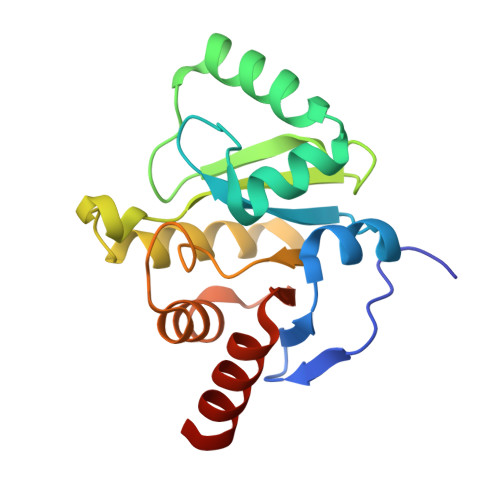Structural Insights into Plasticity and Discovery of Remdesivir Metabolite GS-441524 Binding in SARS-CoV-2 Macrodomain.
Ni, X., Schroder, M., Olieric, V., Sharpe, M.E., Hernandez-Olmos, V., Proschak, E., Merk, D., Knapp, S., Chaikuad, A.(2021) ACS Med Chem Lett 12: 603-609
- PubMed: 33850605
- DOI: https://doi.org/10.1021/acsmedchemlett.0c00684
- Primary Citation of Related Structures:
6YWK, 6YWL, 6YWM, 7BF3, 7BF4, 7BF5, 7BF6 - PubMed Abstract:
The nsP3 macrodomain is a conserved protein interaction module that plays essential regulatory roles in the host immune response by recognizing and removing posttranslational ADP-ribosylation sites during SARS-CoV-2 infection. Thus targeting this protein domain may offer a therapeutic strategy to combat current and future virus pandemics. To assist inhibitor development efforts, we report here a comprehensive set of macrodomain crystal structures complexed with diverse naturally occurring nucleotides, small molecules, and nucleotide analogues including GS-441524 and its phosphorylated analogue, active metabolites of remdesivir. The presented data strengthen our understanding of the SARS-CoV-2 macrodomain structural plasticity and provide chemical starting points for future inhibitor development.
Organizational Affiliation:
Structural Genomics Consortium, Buchmann Institute for Molecular Life Sciences, 60438 Frankfurt am Main, Germany.

















